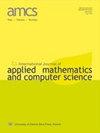基于改进深度残差密集网络的双级深度雨纹去除卷积神经网络模块性能分析
IF 1.2
4区 计算机科学
Q3 AUTOMATION & CONTROL SYSTEMS
International Journal of Applied Mathematics and Computer Science
Pub Date : 2022-03-01
DOI:10.34768/amcs-2022-0009
引用次数: 1
摘要
户外拍摄图像的视觉外观受到各种天气条件的影响,如降雨模式、雾霾、雾和雪。与其他天气条件相比,由于其物理结构,降雨模式会使图像的视觉质量下降更多。此外,降雨模式会影响前景和背景图像信息。从单个图像中去除雨型是一个关键的过程,从实时降雨图像中去除结构雨型受到了越来越多的关注。本文分析了单幅图像的脱轨问题,并提出了一种采用双级深度雨纹去除卷积神经网络的解决方案。提出的单幅图像脱轨框架主要由三个主要块组成:脱轨条纹去除CNN (derain SRCNN)、改进残差密集块(MRDB)和六级尺度特征聚合模块(3sfm)。进行了烧蚀研究,以评估所提出的脱轨网络中可用的各种模块的性能。利用峰值信噪比(PSNR)、特征相似度指数(FSIM)、结构相似度指数(SSIM)和通用图像质量指数(UIQI)等四种性能指标,在流行的合成和实时数据集上评估了所提出的分离网络的鲁棒性。实验结果表明,与其他最先进的单图像脱轨方法相比,该框架在合成和实时图像脱轨方面都优于其他方法。此外,所提出的网络运行和训练时间更短。本文章由计算机程序翻译,如有差异,请以英文原文为准。
Performance Analysis of a Dual Stage Deep Rain Streak Removal Convolution Neural Network Module with a Modified Deep Residual Dense Network
Abstract The visual appearance of outdoor captured images is affected by various weather conditions, such as rain patterns, haze, fog and snow. The rain pattern creates more degradation in the visual quality of the image due to its physical structure compared with other weather conditions. Also, the rain pattern affects both foreground and background image information. The removal of rain patterns from a single image is a critical process, and more attention is given to remove the structural rain pattern from real-time rain images. In this paper, we analyze the single image deraining problem and present a solution using the dual stage deep rain streak removal convolutional neural network. The proposed single image deraining framework primarily consists of three main blocks: a derain streaks removal CNN (derain SRCNN), a modified residual dense block (MRDB), and a six-stage scale feature aggregation module (3SFAM). The ablation study is conducted to evaluate the performance of various modules available in the proposed deraining network. The robustness of the proposed deraining network is evaluated over the popular synthetic and real-time data sets using four performance metrics such as the peak signal-to-noise ratio (PSNR), the feature similarity index (FSIM), the structural similarity index measure (SSIM), and the universal image quality index (UIQI). The experimental results show that the proposed framework outperforms both synthetic and real-time images compared with other state-of-the-art single image deraining approaches. In addition, the proposed network takes less running and training time.
求助全文
通过发布文献求助,成功后即可免费获取论文全文。
去求助
来源期刊
CiteScore
4.10
自引率
21.10%
发文量
0
审稿时长
4.2 months
期刊介绍:
The International Journal of Applied Mathematics and Computer Science is a quarterly published in Poland since 1991 by the University of Zielona Góra in partnership with De Gruyter Poland (Sciendo) and Lubuskie Scientific Society, under the auspices of the Committee on Automatic Control and Robotics of the Polish Academy of Sciences.
The journal strives to meet the demand for the presentation of interdisciplinary research in various fields related to control theory, applied mathematics, scientific computing and computer science. In particular, it publishes high quality original research results in the following areas:
-modern control theory and practice-
artificial intelligence methods and their applications-
applied mathematics and mathematical optimisation techniques-
mathematical methods in engineering, computer science, and biology.

 求助内容:
求助内容: 应助结果提醒方式:
应助结果提醒方式:


